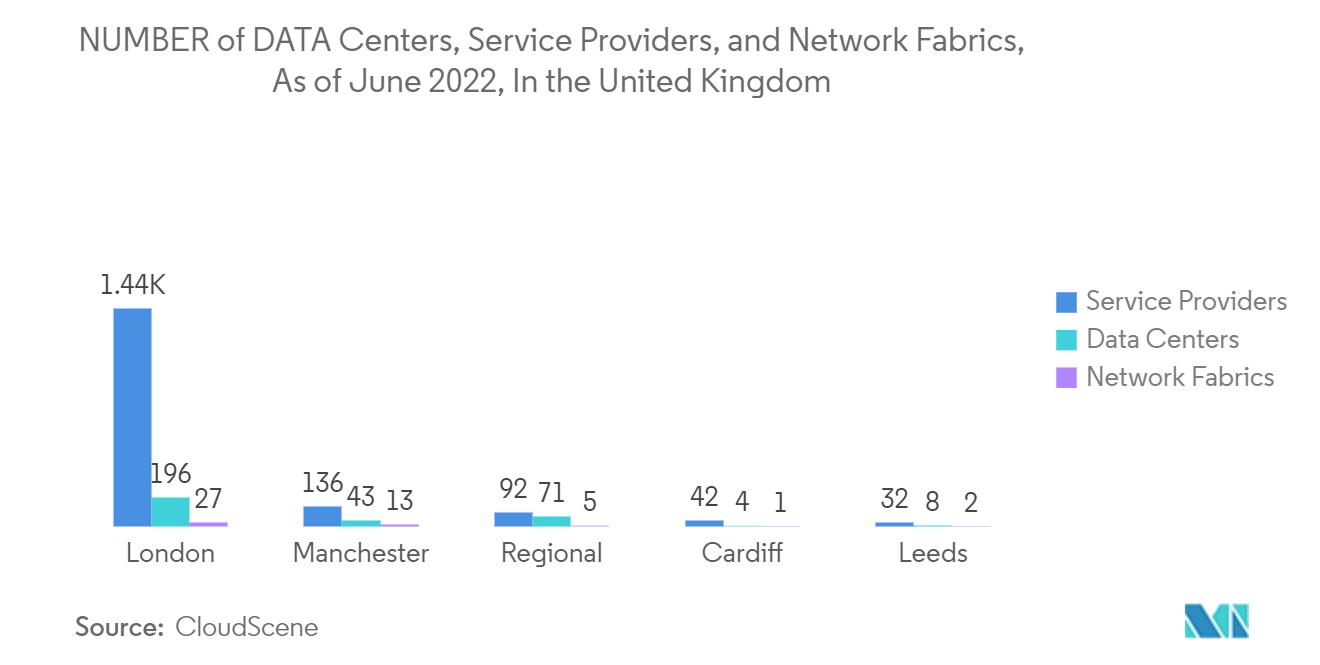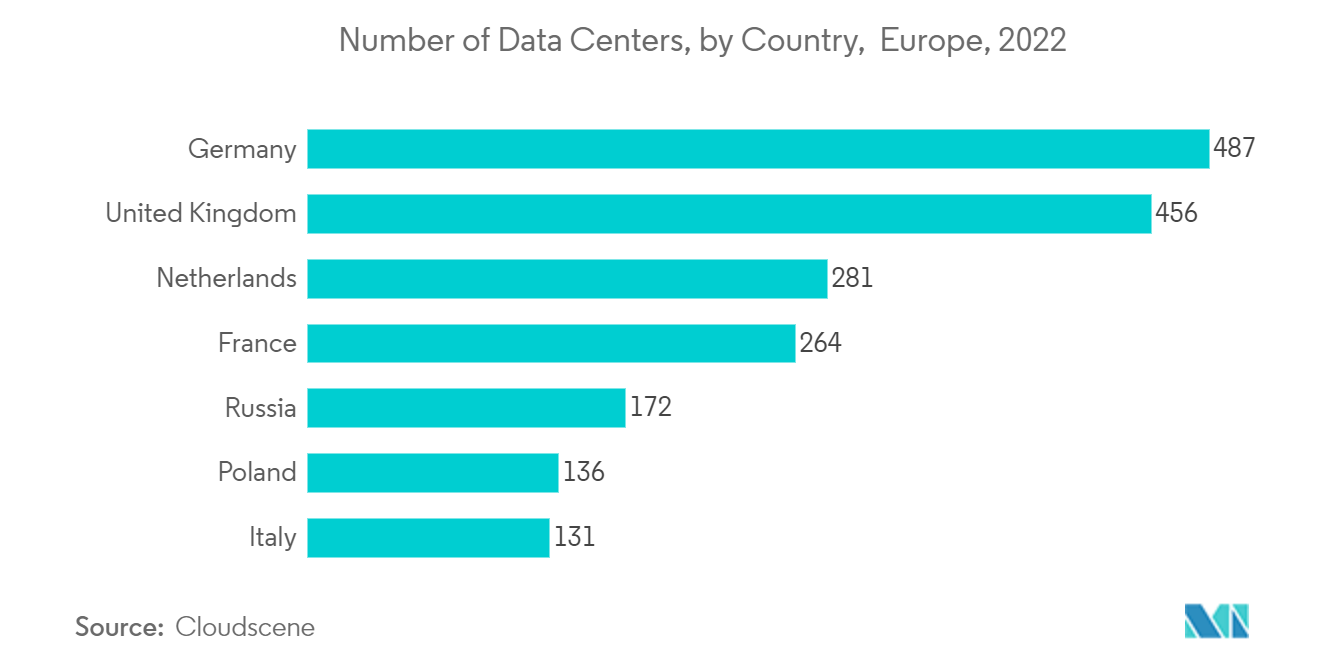Market Trends of Europe Green Data Center Industry
Energy efficient cooling systems will Drive the Market
- The increased number of data centers and higher density in data centers have created a demand for effective cooling. These system types are standard in institutions with limited infrastructure. Such factors are propelling the deployment of energy-efficient cooling systems and hence increasing the market demand.
- Data center equipment needs to be kept cool. The size, location, and data center design all influence the cooling method to be selected. In order to reduce energy consumption and the carbon footprint while optimizing PUE, WUE, and ERE, as well as the capacity of data center equipment, as well as downtime must be minimized.
- The lower the PUE, the greater the effectiveness, with 1.00 being the absolute highest level of effectiveness. A tested and validated data center called Boden Type Data Center (BTDC), the EU-funded BodenTypeDC project constructed. The BTDC One has achieved a PUE of less than 1.02. Data centers in the EU have an average PUE above 1.5. It operates on renewable energy and depends on free air and evaporative cooling technologies without the necessity for refrigerants.
- Server uptime is increased with the use of effective data center cooling technology. Any failure at the server level will have effects on businesses and users since overheating can be disastrous in a professional setting that demands more than 99.99% uptime.
- Whether the data center manager intends for a cold aisle setup or a hot aisle to be present, hot spots can emerge in data centers quickly, necessitating the need for fast and effective solutions. This demands utilizing air-cooling systems or liquid cooling technologies that allow for simple adaptation of the way cold air is utilized in the whole system. Overall, this enables a data center to scale up more efficiently.
- Compared to traditional air-cooled systems, liquid-based cooling methods can save up to 98% of the energy needed to cool servers. Datacenter liquid-based cooling systems use 60% less room than traditional air-cooled systems. Because liquid-based Cooling Systems servers are so reliable, they may be operated for far longer periods than traditional servers. A 200 kW edge data center with liquid-based cooling systems can cut its carbon emissions by 700,000 kg of CO2 by reducing the whole edge data center electricity usage by 40% or more.

Energy Efficiency and Carbon Neutrality will drive the adoption of Green Data Centers
- According to the International Energy Agency, data centers absorb 1% of all worldwide electricity, and by 2025, they will consume 1/5 of the world's power supply. Most energy consumption is for powering the servers, but they also generate heat and must be cooled. HVAC and cooling systems are required to cool the entire system, which necessitates the use of additional power. As a result, to reduce power usage and carbon footprint, energy-efficient systems and technology are necessary.
- Green Data Centers are in charge of making optimum use of computer resources while also being environmentally friendly. In data centers, low-power servers are more energy-efficient than traditional servers. They employ smartphone computing technology to strike a balance between performance and energy usage.
- The European Green Deal aspires to make Europe the first continent to achieve carbon neutrality. Green and digital transformation should be viewed as complementary. The European Commission's paper "Shaping Europe's Digital Future" states that data centers must be carbon-neutral by 2030.
- The European Union has made energy-efficient cloud computing a primary focus. To be carbon-neutral by 2030, data centers must become more energy-efficient, utilize waste energy such as heat, and employ more renewable energy sources.
- A group of Europe's major data center operators has formed and signed a green data center pact, pledging to self-regulate before European Union officials approve data center sustainability legislation. This uncomfortable possibility has hung over the bloc's industry for more than a year. The Climate Neutral Data Centre Pact, lays out efficiency and renewable energy goals for data centers and ambitious targets for achieving them. It creates a framework for measuring progress toward those objectives.

